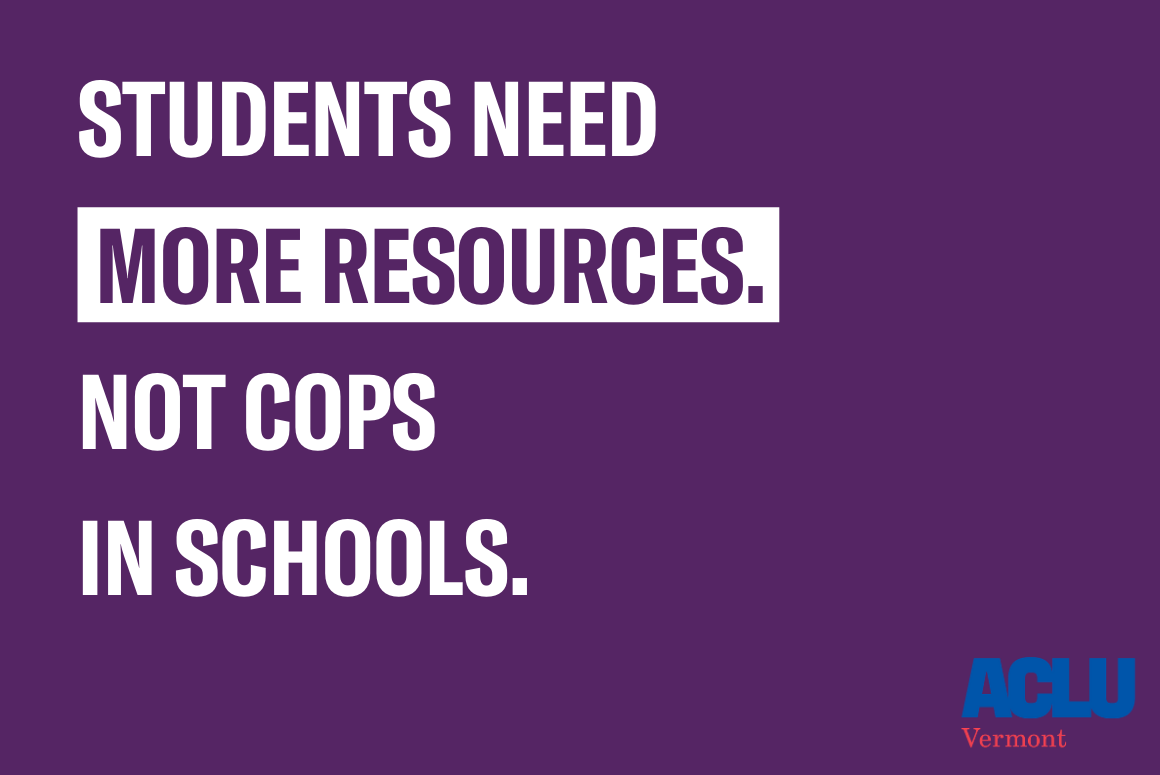All students deserve to attend schools where they are safe, supported, and respected. But right now, our definition of safety in school only applies to some students and not others.
The Facts
- Black children make up 3% of Vermont’s student population but represent 13% of school arrests and 9% of referrals to law enforcement.
- Black students in Vermont were 5.4 times more likely than their white peers to be arrested in school.
- Students with disabilities make up 13% of the Vermont student population but represent 36% of school arrests and 37% of referrals to law enforcement.
- Students with disabilities in Vermont were nearly two times more likely than their peers without disabilities to be arrested in school.
- Black boys with disabilities in Vermont face the highest overall arrest rate and Black girls in Vermont are the most disproportionately represented in school arrests, at five times the rate of their white peers.
The Impact
The history and current climate of policing in America means that the presence of armed cops in schools negatively affects student’s sense of safety, particularly for BIPOC students, LGTBQ+ students, and students with disabilities. Vermont data shows that the presence of cops in schools increases the probability of children interacting with the criminal system, and that students with disabilities and BIPOC students are two to five times more likely, respectively, to be arrested in school than their peers.
1 out of every 4 students is in a Vermont school with a SRO but no psychologist, nurse, social worker, or counselor. Yet, we know that schools who employ more school-based mental health providers see improved attendance rates, lower rates of expulsion, suspension, and other disciplinary incidents, improved academic achievement and career preparation, and improved graduation rates.
School districts across Vermont spend tens of thousands of dollars contracting with police departments but do not employ enough social workers – the overall student-social worker ratio in VT was 1,265:1, and the ratio recommended by the School Social Work Association of America is 250:1.
Take Action
Our communities should determine what looks like safety in their schools. Consult the Education Justice Coalition's Police Out Of Schools Toolkit for guidance on starting and advancing this important conversation in your school district.

